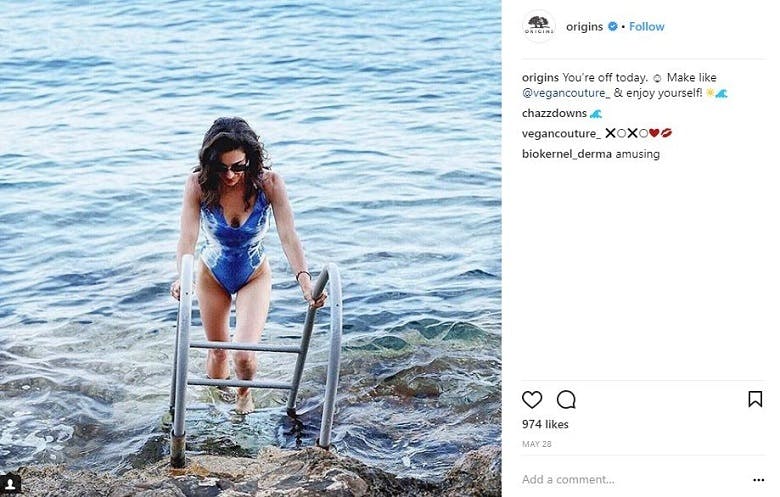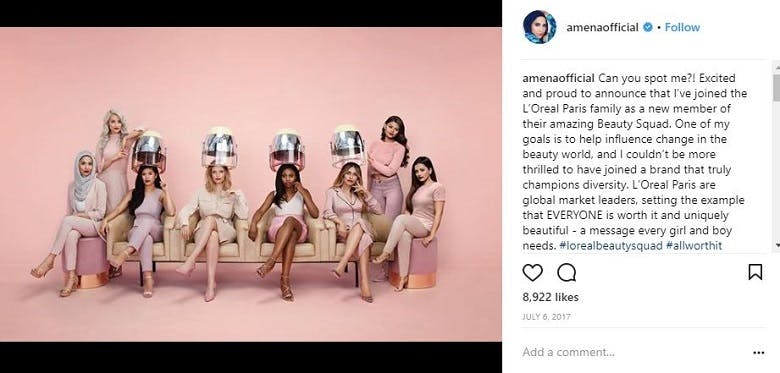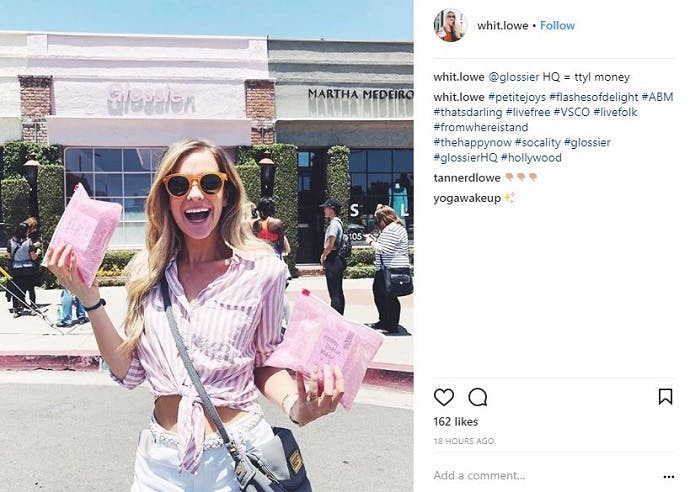A new report from Celebrity Intelligence, Influencing Beauty, delves into the impact digital talent has had on the beauty industry, taking into consideration the survey response of 385 marketing specialists.
So, how have beauty brands evolved in their approach to influencer marketing?
You can check out the report in full, but in the meantime, here are a few key takeaways.
Sales < awareness
In its early days, influencer marketing was commonly thought of as an effective way to drive sales. With campaigns usually being one-off and heavily product-focused (e.g. a single Instagram post promoting a specific lipstick) – it made sense for brands to focus on the subsequent sales.
Interestingly, this is no longer the case, as ‘building brand awareness’ is now cited as the most important reason for beauty brands enlisting the support of digital influencers.
Why has opinion shifted? Quite simply, beauty brands now recognise that the path to purchase is far more complex than it once was. From online research and reviews to print media and personal recommendations – there are endless things that can influence buying behaviour.
So, as influencer marketing has reached maturity, brands have also realised that it is not a quick fix, but part of a long-term and wider strategy. As a result of this, many are also starting to offer influencers long-term contracts rather than one-off or short-term deals, as well as more creative projects such as the chance to create fashion lines and beauty products.
Congrats @LucyAndLydia on their very own @tangleteezer products! https://t.co/Buk0ekAMAf
— Gleam Futures (@TeamGleam) May 29, 2018
Appealing to Gen Z
One of the biggest drivers of change within the beauty industry has been the expectations of ‘digital-born’ consumers, or Generation Z as they’re also known.
With 65% of this group relying on social media to discover and select beauty products, these expectations have in turn impacted the type of content (and influencers) that brands use.
According to research by Barkley, Generation Z care about body positivity, social activism, and working for their own success, among other ‘authentic’ traits – more so than other demographics including millennials.
As a result of this, beauty brands are striving to be more authentic, and taking extra care when it comes to choosing influencers. Similarly, they’re also involving consumers more than ever, and using topics like cruelty-free make-up and veganism to drive interest from a younger, socially-aware audience.
Skincare brand Origins is one example of this, often partnering with influencers that represent its commitment to natural and cruelty-free products.

Delving into data
Another change that indicates market maturity is that brands are taking a data-led approach to choosing influencers. The aforementioned desire for authenticity is undoubtedly behind this, meaning brands are keen to measure audience insights to determine whether or not someone is a correct fit.
This also means that reach is no longer the most important KPI. A large audience does not necessarily indicate an engaged audience, and as a result, brands are also looking to mid-tier or low-tier influencers with a small but highly invested set of followers.
Interestingly, niche female influencers are among the most in-demand, with 86% of survey respondents saying they have worked with this group in the past year.
On the flip side, influencers themselves are also becoming pickier, recognising that an inauthentic or poorly executed campaign could alienate their own audience – as well as damage future partnerships.
One commonly cited example of an authentic campaign is L’Oréal’s Beauty Squad, which involved the brand working with eight mid-tier influencers from a diverse set of backgrounds.
By giving each influencer the freedom to create their own style of content and offer honest reviews, it succeeded in creating a sense of real authenticity.

Going back to basics
Finally, Celebrity Intelligence’s report suggests that – while many believe influencers will still be critical for brands in five years’ time – the power may also shift back to anonymous consumers that hold influence.
In other words, consumer-led communities will rise above well-known personalities, with brands able to capitalise on the collective power of advocacy.
Glossier is one example of this already in existence, with the brand largely steered by its online community. It often responds and replies to comments, posts user-generated content, and even listens to product requests – it launched an SPF on the back of follower feedback.
It has not turned away from professional digital influencers entirely, but its community-led approach underpins its authentic reputation, and proves that consumers hold the real power.

Download Celebrity Intelligence’s Influencing Beauty report here

Comments